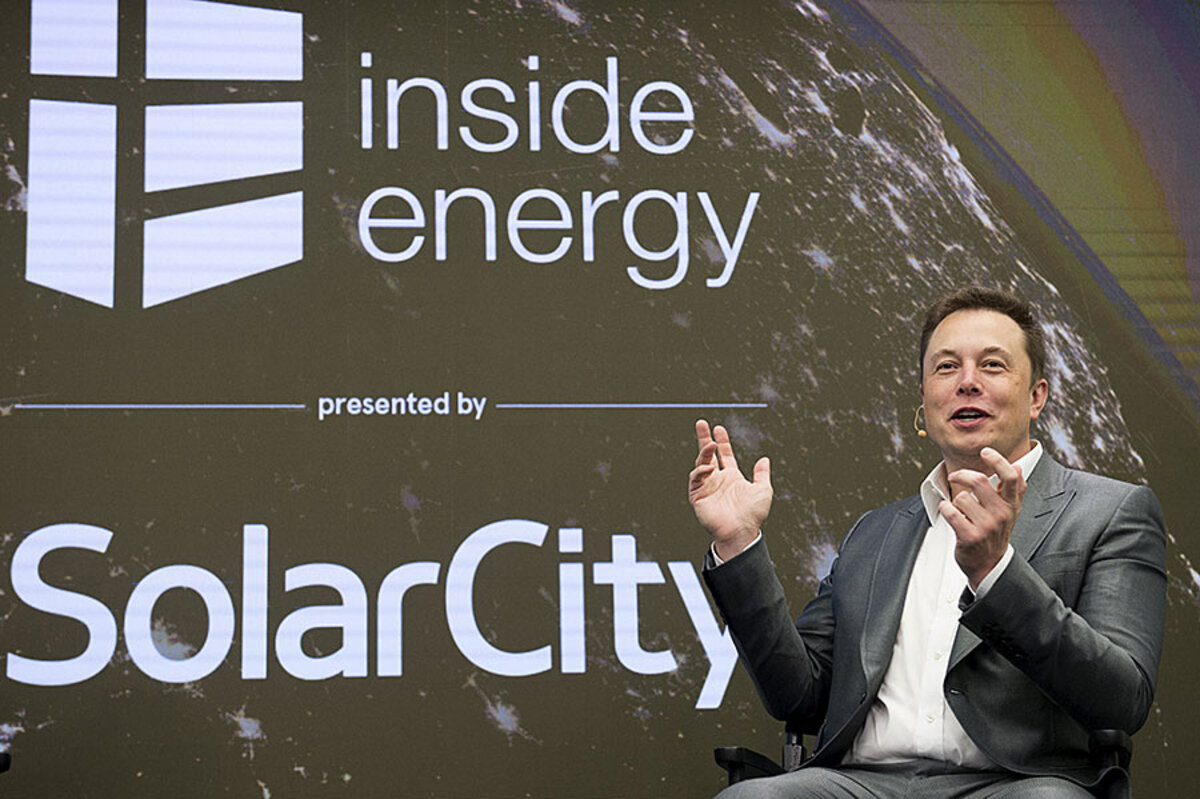Are solar panels now as cheap as fossil fuels?
Loading...
Solar energy has long been a promising alternative to fossil fuels, but high prices and lack of government subsidies have kept solar panels from becoming America's dominant power source. But Elon Musk says he can change this.
SolarCity, the energy company for which Mr. Musk serves as chairman, has just released the most affordable, efficient solar panels for residential use yet. The panels reach 22.5 percent efficiency, just one percentage point above competitor SunPower's panels, but six points above the industry average.
In addition, SolarCity panels are notably more affordable than competitors, as the “venerable SunPower solar cells are than the average,” reported Extreme Tech.
But that affordability is questionable. “Of course, , and whether the panels are comparatively cheap doesn’t necessarily mean you can afford them, especially without government subsidies,” writes Extreme Tech.
Earlier this year, Green Tech Media Research said they expected “U.S. module prices to fall to this year,” if tariffs on Chinese cells were reduced. SolarCity’s model produces energy at 55 cents per watt.
SolarCity has already secured itself a position as the largest solar panel installer in the US, but it could also become the largest manufacturer, as Musk continues to position the company as one that can both produce and install.
“With full control of the process, SolarCity can now start to hour directly,” says Extreme Tech. However, for the company to manufacture all of their own panels, Digital Trends says.
Overall, solar energy is growing in the US. In the second quarter of 2015, “the US installed 1,393 megawatts (MW) of solar photovoltaics (PV) in the second quarter of 2015 to reach , enough to power 4.6 million American homes,” reported the Solar Energy Industries Association.
Within the residential market alone, solar saw . And among all new electric generating capacity in the first half of 2015, 40 percent came from solar.
Since 2010, the cost of a solar electric system has says the Financial Times. This drop was facilitated by “the from $6.3 per watt in 2009 to an average of $3.1 per watt for projects completed in 2014,” said PV Tech. Another catalyst, they say, has been the “investment tax credit (ITC), which offers 30 percent tax breaks to all scales of solar in the US.”
Many are still skeptical of solar power as a feasible replacement of fossil fuels, though. Electronic Consumer News asked readers to write in last year saying whether they thought solar energy would ever be a viable alternative to traditional power. , with contributors saying the “solar power [could] never supply more than 20 to 25 percent of the power requirements” and is therefore “no good for replacement for traditional power plants.”
“Unless solar power can solve the problems of inexpensive, efficient conversion and adequate storage for dark times, it will ,” wrote contributor Dave Telling. On the other hand, Alternative Energy, a website maintained by “alt energy aficionados,” states that “from an environmental perspective, .”
“A 1.5 kilowatt PV system will keep more than , the chief greenhouse gas, out of the atmosphere over the next 25 years,” Alt Energy writes. “The same solar system will also prevent the need to burn 60,000 pounds of coal. With solar, there's no acid rain, no urban smog, no pollution of any kind.”





